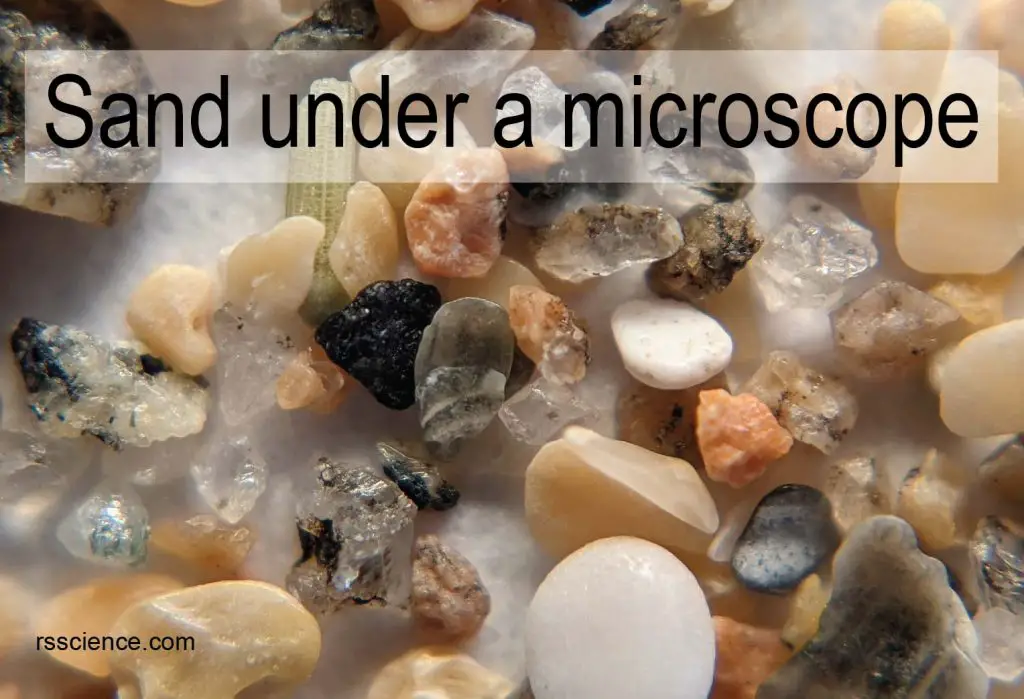Have you ever seen sand under a microscope? It is one of the most incredible things to look at under a microscope. There are white, red, green, and black sand beaches in the world. Do you know what determines the color of the sand? You will get the answers in this blog post.
This article covers
Where does the sand come from?
Sand is a byproduct of weathering. These tiny particles came from many sources, such as large rocks or mountains. Sand forms when rocks break down from weathering and sometimes are eroded by rivers over thousands of years. It is a very long process.
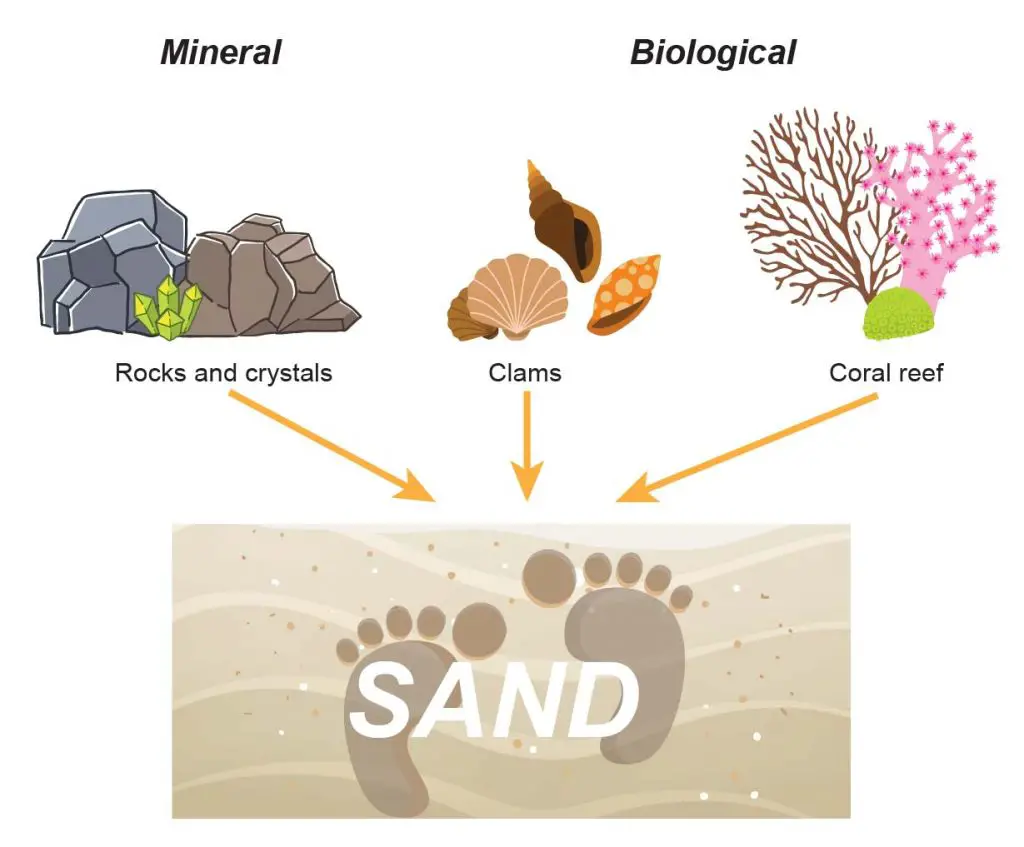
[In this figure] Sand formation.
Two types of sands. One came from rock and minerals, and the other one came from shell and coral.
Some beach sands are not made of minerals but rather shells from marine organisms and coral fragments. The ocean waves and marine animals such as parrotfishes break down the reefs and shells to small pieces and bring them to the beach to produce sand. In fact, parrotfishes are famous for their ability to produce white coral sand.

[In this figure] Parrotfish.
The strong beak of Bolbometopon muricatum can grind the sturdiest corals to produce sands.
Photo credit: Hectonichus Wiki
How to see the sand under the microscope
Stereo microscope
The best way to observe sands under a microscope is to use a stereo microscope with a magnification of 10x to 40x. The stereo microscope gives you a 3D view of each grain of sand. They look like little crystals, with amazing shapes and colors. You can also try to view them under a white, black background or illuminate them from the side, which allows the color of minerals to stand out.
You may not be able to see good images of sand using a compound microscope because sands are not transparent and they are thick as well.
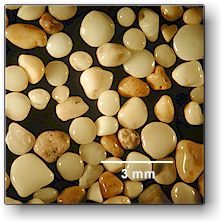
[In this figure] Image is taken from a stereo microscope.
Sand from North Shore, Oahu, Hawaii.
Photo credit: Microbus
Macro lens attached on a cell phone
If you do not have a stereo microscope, you might use a magnifying glass (common magnification 2x-6x) or macro lens (10-20x) attached to a cell phone to see sand grains. The series images below are the same sample taken using a magnifying glass, a 20x macro lens attached to a cell phone, and a 20x macro lens with cell phone 3x zoom-in function (total bring it to 60x), respectively.

[In this figure] A marco lens attached to a cell phone.
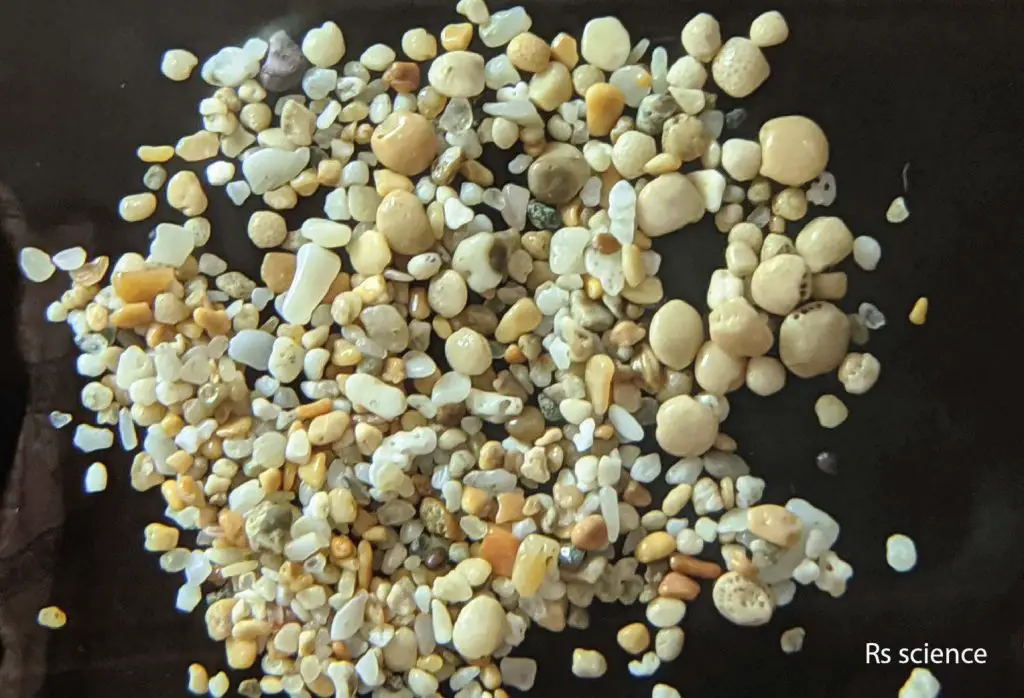
[In this figure] The sand grains under a magnifying glass.
The sand grains from a magnifying glass look small but well-focused.
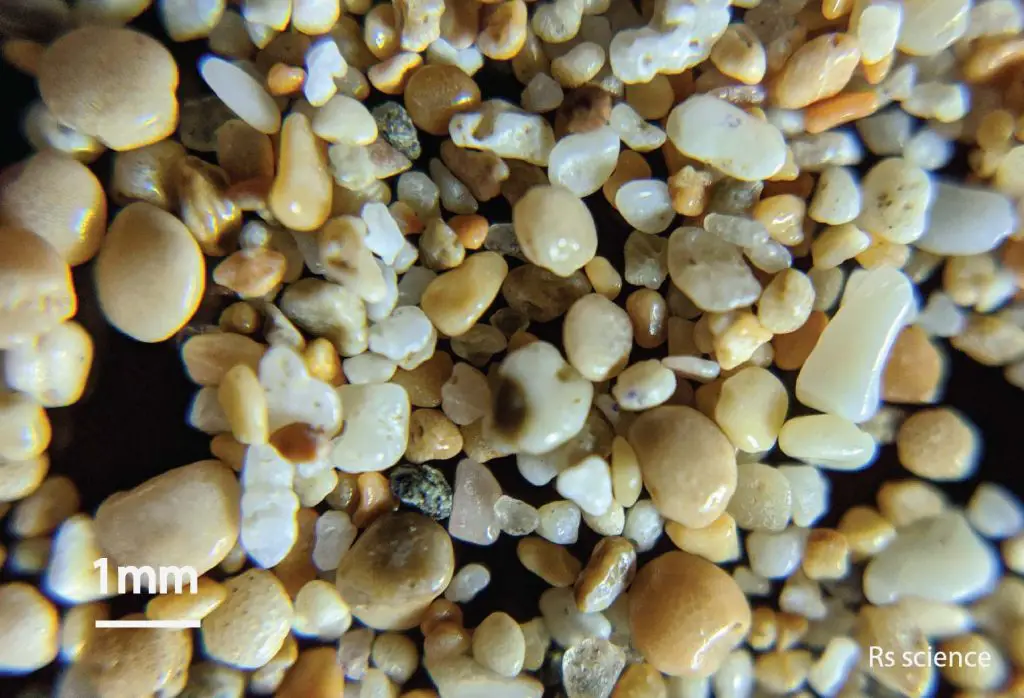
[In this figure] The sand grains under a 20x macro lens attached to Google pixel 3.
The shape, texture, and color are well presented under a 20x macro lens. The size ranges from 0.3 to 2 mm. Notice that the edge of the sand is rounded, a characteristic of the coral sand. The sand is from Shanshui Beach, Penghu, Taiwan.
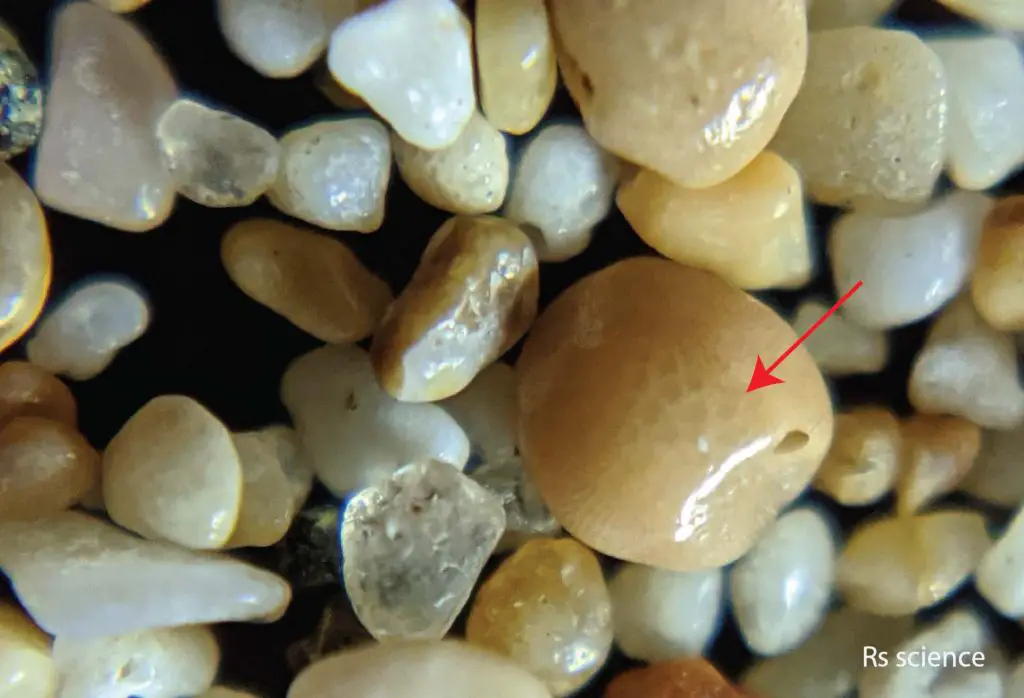
[In this figure] The 60x magnification of sand grains.
The image is the same view as the above image (20x). It was taken by a 20x macro lens attached to Google pixel 3, and with Google pixel 3’s camera to zoom-in 3x. Therefore, it brings up the total magnification to 60x. More details of each sand grain can be appreciated. The coral pattern (red arrow) can also be observed on the biggest yellow grains, implying these sands are from coral fragments. The sand grains are from Shanshui Beach, Penghu, Taiwan.
One advantage of a macro lens attached to a cell phone is allowing for documentation images of sands. In addition, it is also relatively cheap compared to getting a decent stereo microscope. However, it also requires some experience to take good images because the focal length of the macro lens is very short and hard to work with. Overall, I would still recommend using a macro lens to start with.
What to look for when you investigate the sand
1. The size of the grains
The size of the sand ranges from 0.02 – 2.0 mm (millimeters) in diameter. You can put a metric ruler under your microscope to measure their size.
2. The color of the grains
The color of the sand is related to the composition of the individual particles. It tells us its origin and story. For example, the sand from Punalu’u black sand beach on the big islands of Hawaii is black because it is made of basalt and created by lava flowing into the ocean. The black color tells us it is from lava flow (origin) and made of basalt (composition).
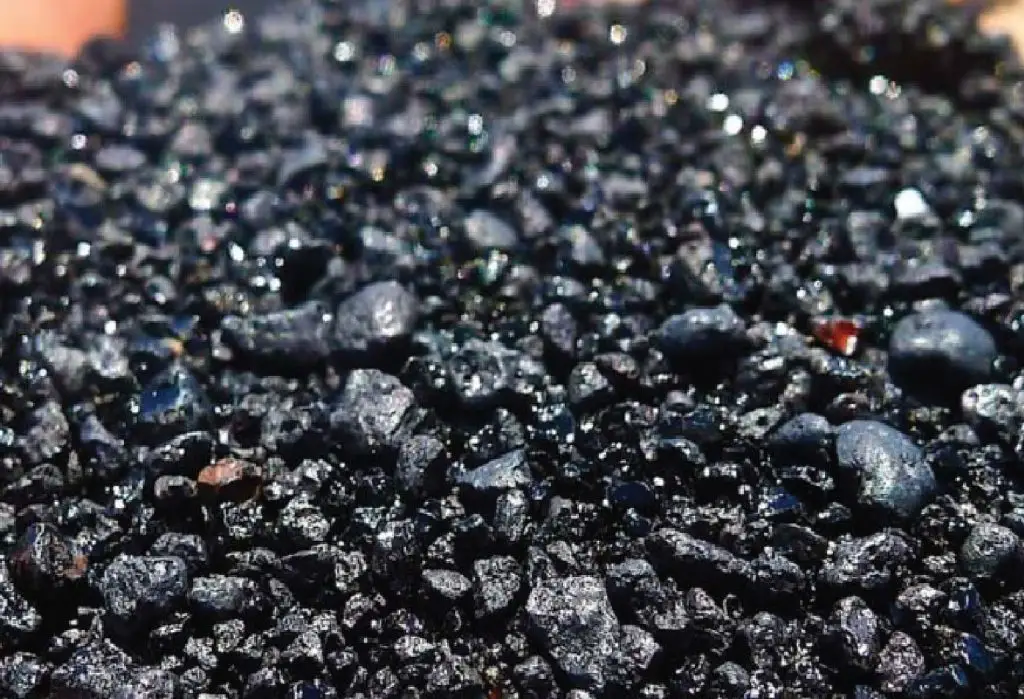
[In this figure] The sand grains from the black sand beach.
They made of basalt and created by lava flowing into the ocean.
Photo credit: Love Big Island
Similarly, lots of olivine crystals will make a green beach. The best example is the green sand beach (Papakōlea) on the big island of Hawaii, one of the only two green beaches in the United States.
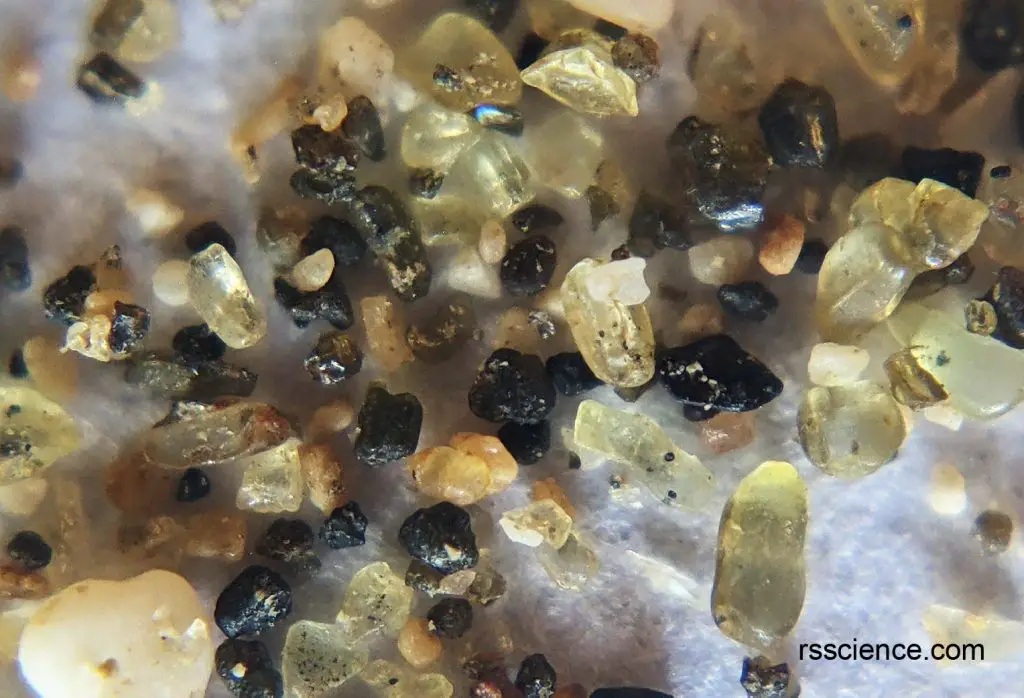
[In this figure] Close up of the sand grains at the green sand beach.
You can see many olivine crystals (light green) mixed with the lava (black) and shell (white) fragments. Magnification 50x.

[In this figure] Papakōlea Beach.
Looking at the green beach from the top. The beach sands are eroded from the enclosing volcanic cone.
The tan color of red sand beaches is a result of iron oxide. An example of a red sand beach is Kaihalulu Beach on Maui. Its red sand is from the erosion of a nearby cindercone that is rich in iron.
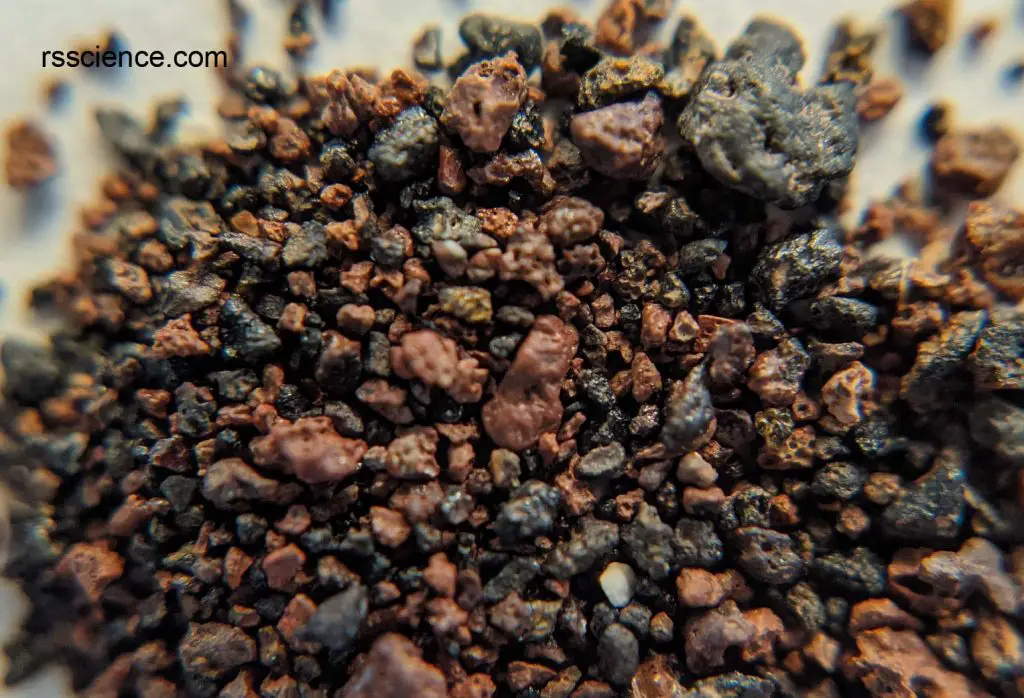
[In this figure] Close up of sand particles from Kaihalulu Beach.
The sands are a mixture of red (iron oxides) and black particles (basalt).
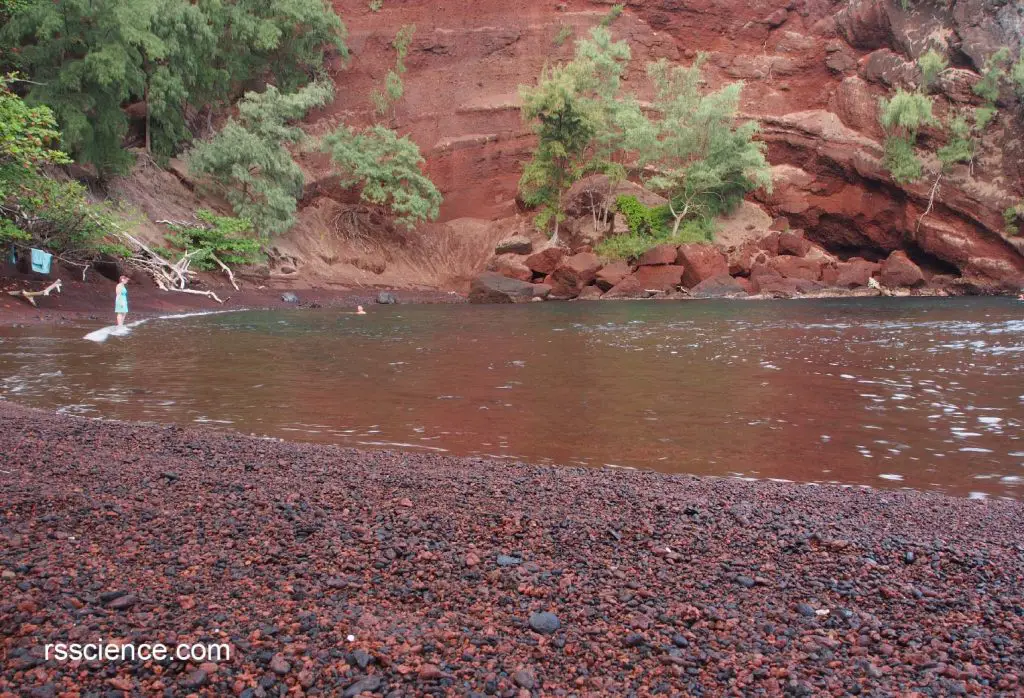
[In this figure] Kaihalulu Beach.
Kaihalulu Beach is located on the island of Maui, Hawaii. Similar to the green sand beach, the sand is from the erosion of a cinder cone behind the beach.
3. The shape of the grains
Is it smooth or rough? Is there a particular shape like stars, triangles?
4. What are the materials that make up the sand?
Is it made from minerals like quartz (usually transparent and shiny), feldspar, or mica? Or Is it made from tiny pieces of broken shells, coral fragments, or small marine animals?
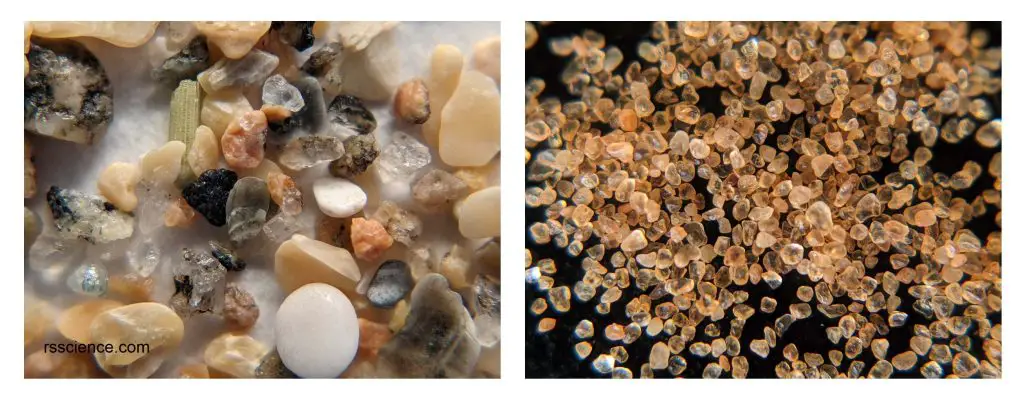
[In this figure] The composition of sands.
The sands from the left are made of many shell fragments and minerals (more variety in material and color). The sands from the right look like only made from a couple of minerals.
5. Try a black and a white background
I like the black background because the color of most sands is lighter such as white and beige. If you have black sands, you might see better on a white background.
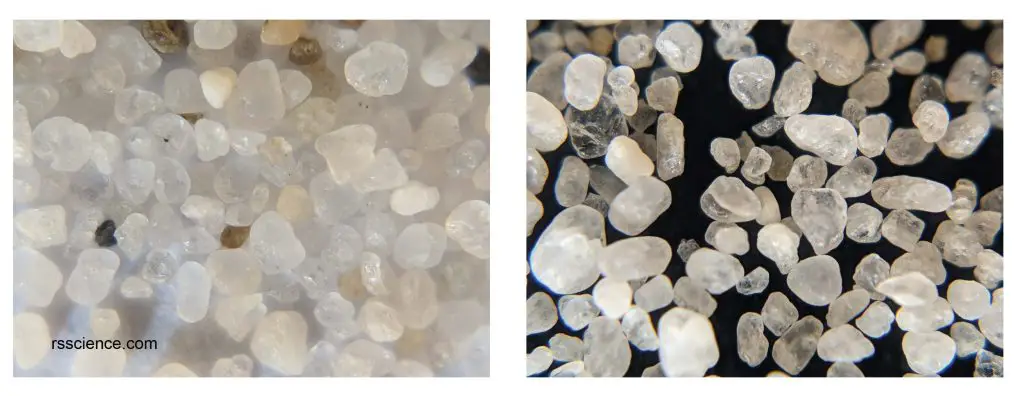
[In this figure] The same sand sample on the white vs. black background.
The white sand stands out more in the black background than in the white background.
Sands from interesting places
Chirin island, Japan
Chirin Island (Chiringashima) is an uninhabited island in Kinko Bay, Japan roughly 3 km in diameter and 90 m high. It is connected to the mainland by a sandbar. When the tide is at low tide, the sandbar appears for 1-4 hours a day (depends on the weather) during October from March. The sandbar is about 800 m in length at low tide, therefore enabling you to walk across to the island.
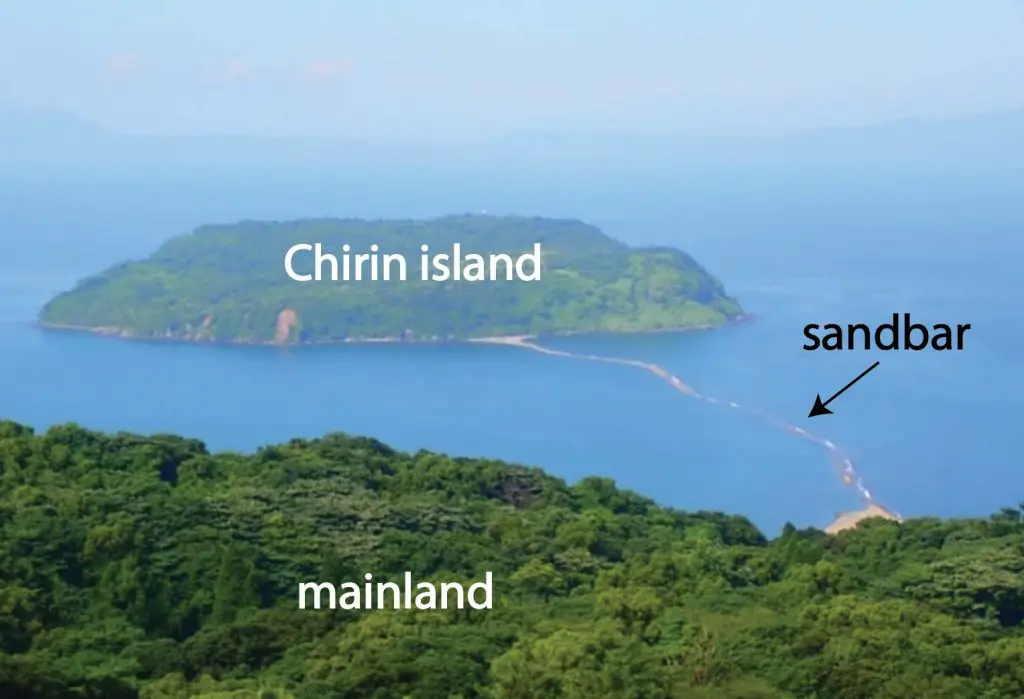
[In this figure] The sandbar connecting to the Chirin island, Japan.
We can take a look at the sand of the sandbar under a microscope.
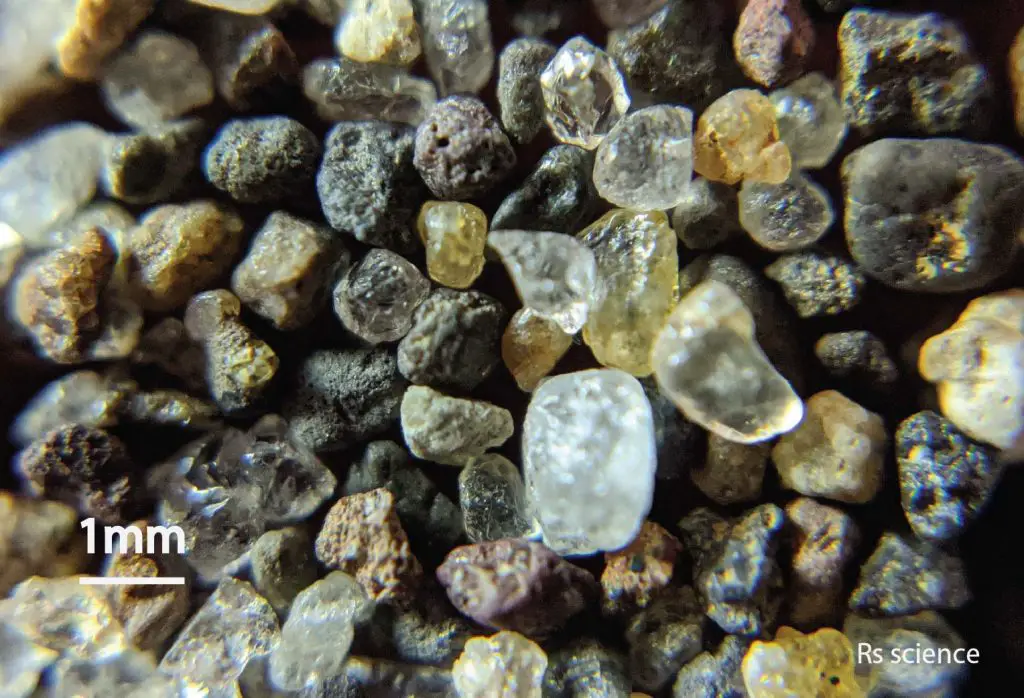
[In this figure] Close up of the sand from the sandbar connecting to the Chirin island, Japan.
You can see some quartz (usually transparent and shiny) particles and hornblende (black). The magnification is 20x.
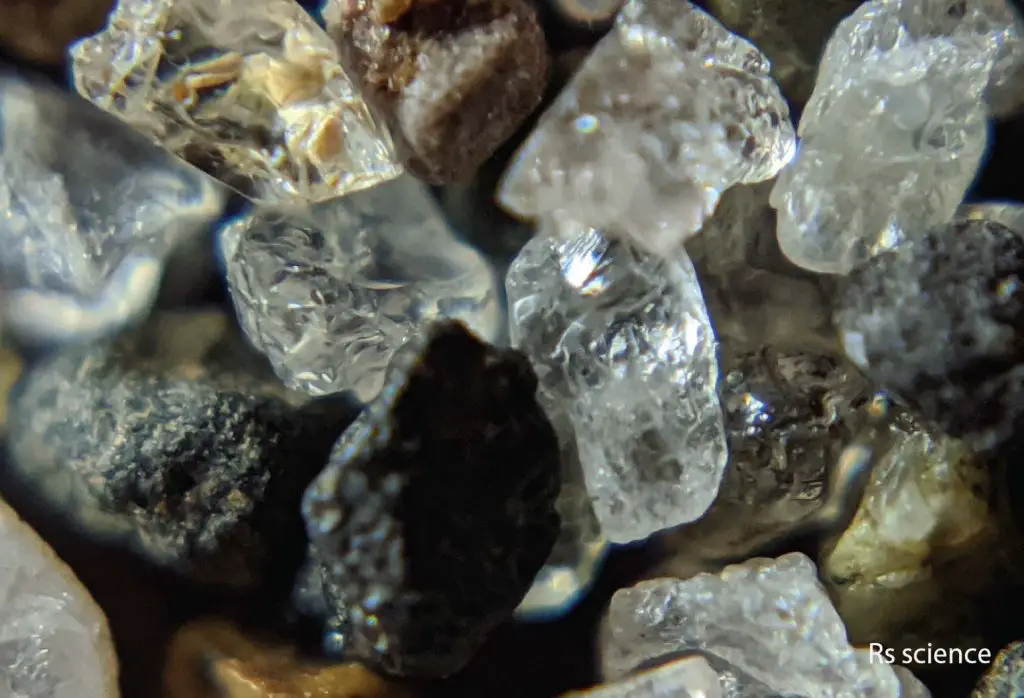
[In this figure] Close up of the sand from the sandbar connecting to the Chirin island, Japan.
The magnification is 60x.
The star-shaped sand of Okinawa, Japan
If you look at the sands of Hatoma Island in Okinawa under a microscope, they are actually tiny star-shaped shells (also called “tests”) from unicellular protists called Foraminifera. Their size usually less than 1 mm, but some are much larger; some species can reach up to 20 cm. There are over 50,000 species identified so far, including 10,000 living and 40,000 fossil species.
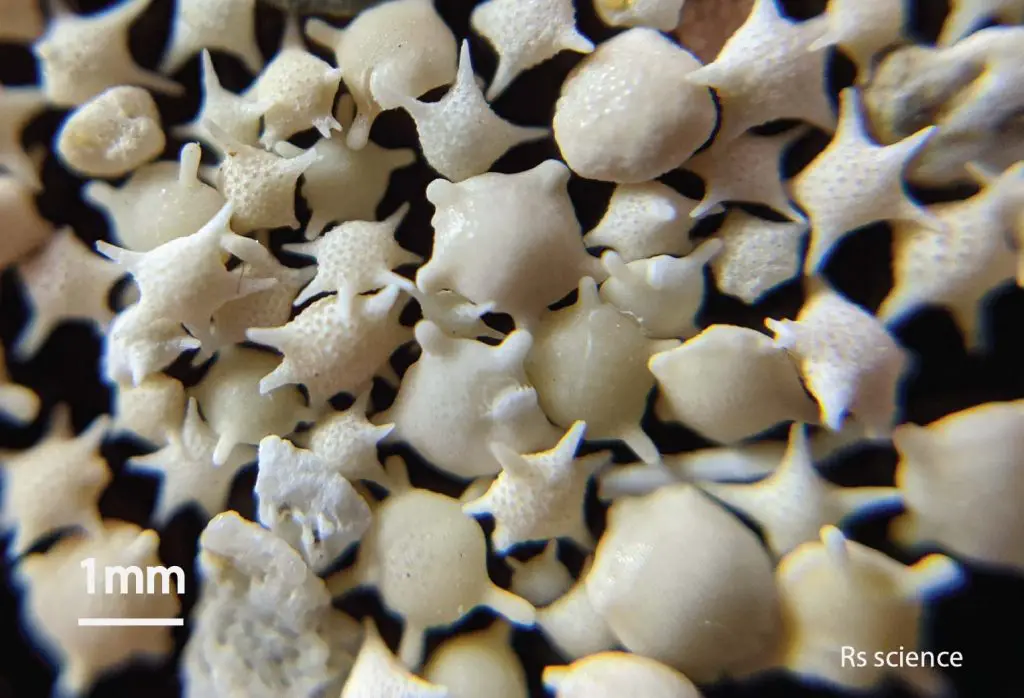
[In this figure] Star sand under a microscope.
Their size is around 1 mm. Some star-shaped tests have very sharp spikes and some are worn out by the ocean wave. The magnification is 20x.
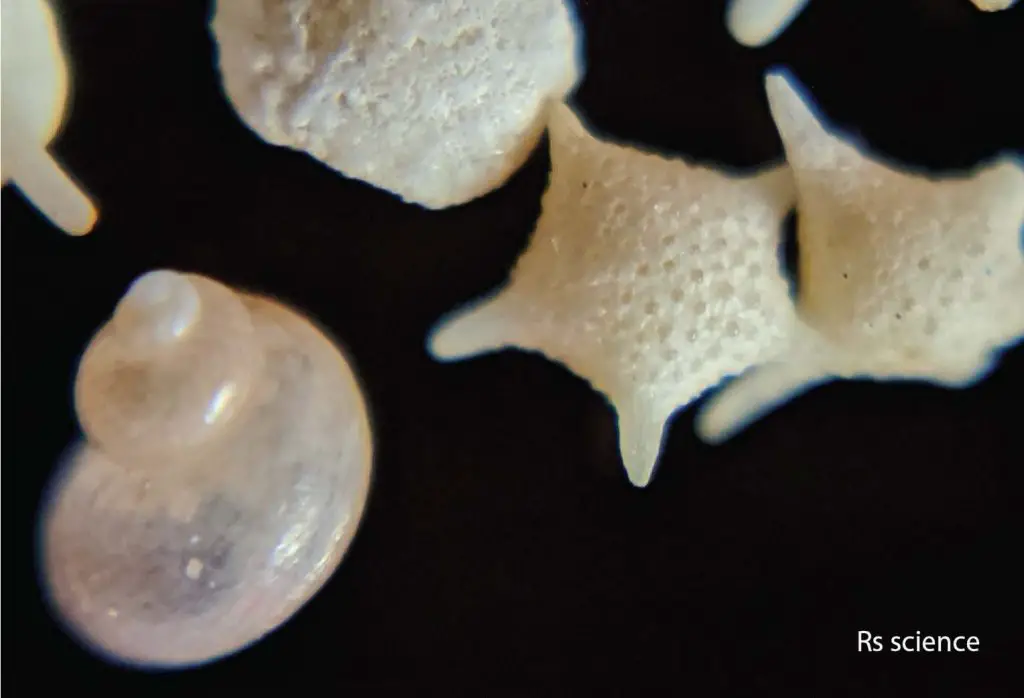
[In this figure] Closed up of the star sand under a microscope.
With higher magnification, the texture of the star-shaped test is more magnified and observed. Other snail-like shells are present as well. The magnification is 60x.
Foraminiferal tests provide protection and food storage for the organism. When Foraminifera dies, their tests remain in the sea, and the tide brings them to the seashore. This process results in beaches with star sand.
The shape of “tests” of Foraminifera is highly variable. They may be single-chambered or multi-chambered. The star-shaped tests are created by Baculogypsina sphaerulata.
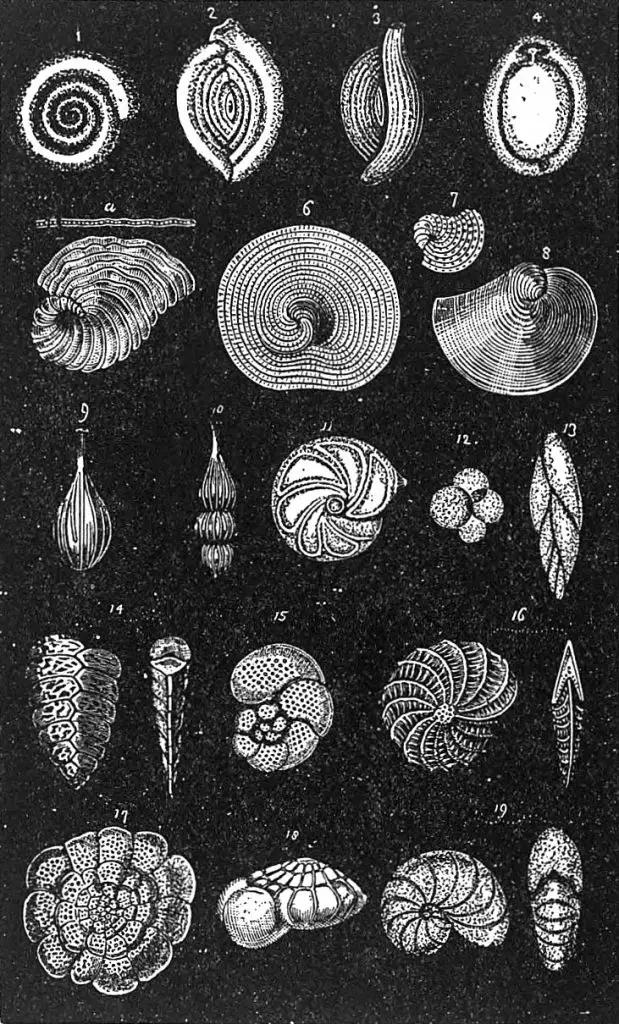
[In this figure] A variety of calcareous foram test morphologies.
Photo Credit: By Marcus Manuel Hartog – “Foraminifera,” Encyclopædia Britannica (11th ed.), v. 10, 1911, p. 630, fig. 3.
Coral pink sand dunes, Utah
The coral color (orange) of the sand is the result of iron-oxide stains on the surface of the sand grains inherited from the source, Navajo sandstone. Indeed, the colorado plateau is full of different shapes of red and orange sandstone. It is one of my favorite places in the world.
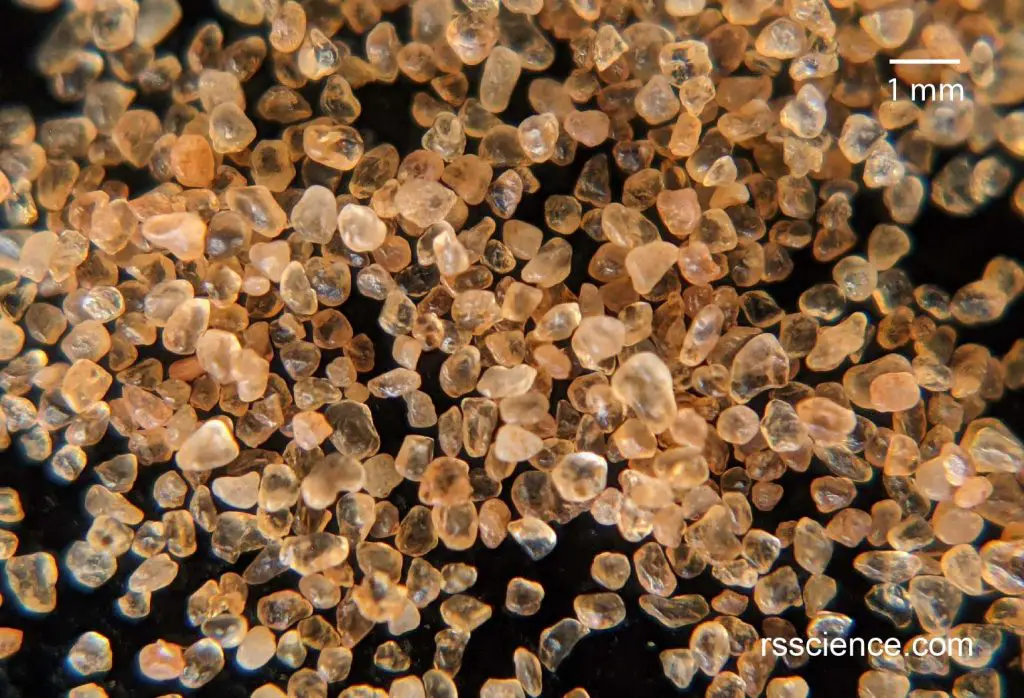
[In this figure] A 50x magnification closeup of the sands from coral pink sand dunes.
Bar Harbor, Maine
My initial looking at the beach sand from Maine is quite ordinary. However, it blows my mind when I looked at them under a micro lens – 50x magnification. There are so many little grains to look at with different colors, textures, shapes, and made of different minerals and shells. They are amazing, aren’t they?
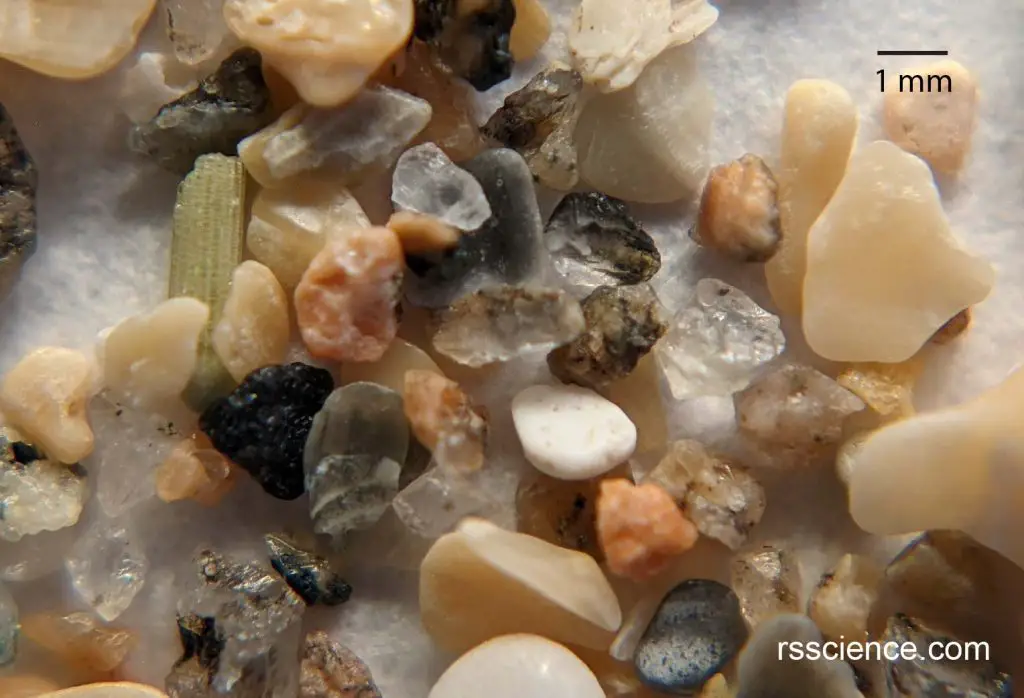
[In this figure] A 50x magnification closeup of the sands from Bar Harbor, Maine.
After looking at several different places of sand under a microscope, is it amazing? Let’s start sand collecting!
If you are really into studying sand, you can check sand images from Sandatlas and MicrolabNW.
Reference
http://www.slate.com/blogs/atlas_obscura/2015/03/05/the_star_shaped_sand_of_okinawa.html
Amazing sands from around the world
Related posts
How to Choose the Right Microscope (Compound Microscope vs. Stereo Microscope)

